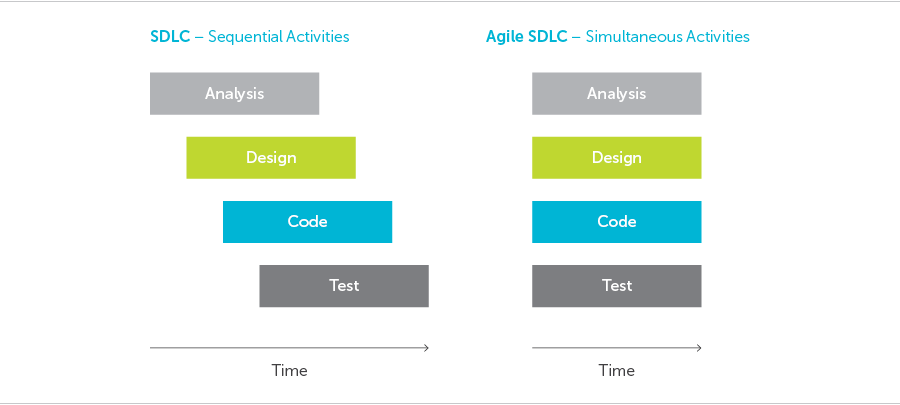If you have a project that goes live in two weeks, and only have one or two days for testing, then waterfall SDLC might not be your best bet.
The Agile SDLC
Going agile is great for projects that have tight deadlines. In theory, agile software development means implementing shorter iterations and more frequent delivery. In practice, this means that there are no roadmaps or requirements; the project begins with a lower quality product that goes through multiple, rapid iterations until it reaches its final stage.
On the front end, the agile method allows for changing priorities as they appear, and is perfect for projects that require a fast turnaround.

Traditionally, testing was done manually and sequentially, which can be fine for smaller projects but disastrous for larger ones.
Manually testing for bugs and defects is time-consuming and tedious, and for larger projects that require faster turnover rates, this creates a lot of problems with time overhead. This traditional model is also outdated in that its main purpose is to find problems within the system, making it a reactive methodology instead of a proactive one.
In the agile SDLC, everything is set up to move much faster and more proactively. The agile methodology works with short deadlines in mind, and can work even faster and more thoroughly by implementing test automation.
Test automation allows for bigger volume-projects, and prevents bugs and defects instead of focusing on seeking them out.
To learn more about test automation and the agile SDLC, c heck out our white paper, “Going Agile: Redesigning Your SDLC.”

